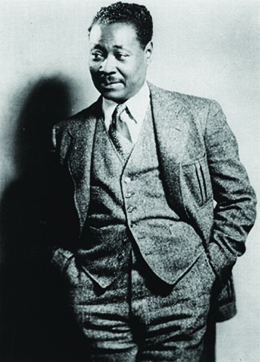| << Chapter < Page | Chapter >> Page > |
The growing lethargy toward women’s rights was happening at a time when an increasing number of women were working for wages in the U.S. economy—not only in domestic service, but in retail, healthcare and education, offices, and manufacturing. Beginning in the 1920s, women’s participation in the labor force increased steadily. However, most were paid less than men for the same type of work based on the rationale that they did not have to support a family. While the employment of single and unmarried women had largely won social acceptance, married women often suffered the stigma that they were working for pin money—frivolous additional discretionary income.
It wasn’t only women who found new forms of expression in the 1920s. African Americans were also expanding their horizons and embracing the concept of the “new Negro.” The decade witnessed the continued Great Migration of African Americans to the North, with over half a million fleeing the strict Jim Crow laws of the South. Life in the northern states, as many African Americans discovered, was hardly free of discrimination and segregation. Even without Jim Crow, businesses, property owners, employers, and private citizens typically practiced de facto segregation, which could be quite stifling and oppressive. Nonetheless, many southern blacks continued to move north into segregated neighborhoods that were already bursting at the seams, because the North, at the very least, offered two tickets toward black progress: schools and the vote. The black population of New York City doubled during the decade. As a result, Harlem, a neighborhood at the northern end of Manhattan, became a center for Afro-centric art, music, poetry, and politics. Political expression in the Harlem of the 1920s ran the gamut, as some leaders advocated a return to Africa, while others fought for inclusion and integration.
Revived by the wartime migration and fired up by the white violence of the postwar riots, urban blacks developed a strong cultural expression in the 1920s that came to be known as the Harlem Renaissance. In this rediscovery of black culture, African American artists and writers formulated an independent black culture and encouraged racial pride, rejecting any emulation of white American culture. Claude McKay’s poem “If We Must Die” called on African Americans to start fighting back in the wake of the Red Summer riots of 1919 (discussed in a previous chapter, [link] ). Langston Hughes, often nicknamed the “poet laureate” of the movement, invoked sacrifice and the just cause of civil rights in “The Colored Soldier,” while another author of the movement, Zora Neale Hurston, celebrated the life and dialect of rural blacks in a fictional, all-black town in Florida. Hurston’s Their Eyes Were Watching God was only published posthumously in 1937.


Notification Switch
Would you like to follow the 'U.s. history' conversation and receive update notifications?